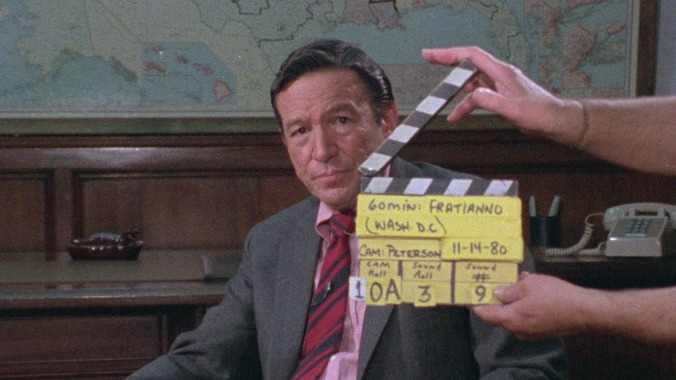Mike Wallace Is Here tells a fascinating cautionary tale, but tells it too late

As a profile of an important journalist, Mike Wallace Is Here works. Wallace laid the foundation for the sort of confrontational, probing TV interview that would dominate in the ’70s and ’80s. He coaxed truth and insight from major figures with a direct, fearless style of questioning, getting to the heart of people’s motivations and never settling for pat answers. For a time, hearing the words “Mike Wallace is here” clearly created some apprehension in the hearts of those who’d agreed to sit down with him, from world leaders (Richard Nixon, Ayatollah Khomeini) to pop culture figures (Oprah Winfrey, Barbra Streisand, Johnny Carson). It’s almost as if talking to him were a rite of passage and a personal challenge to be faced. Like him or not—and plenty clearly didn’t like him very much—people opened up to him, responding to his challenging questions.
Wallace’s fascinating career would have been enough to fill a feature-length documentary; really, just a greatest-hits compilation from his decades on 60 Minutes would make for an incredible history lesson. Director Avi Belkin makes artful use of mountains of archival footage, going back to Wallace’s earliest days, when he made the transition from radio announcer to commercial pitchman—great footage there—to finding his calling as a probing interviewer on a show called Night Beat. Wallace was witness to so many incredible world events that the film barely has time to give them their due. Watergate, the My Lai massacre, the civil rights movement, tobacco industry scandals—these are things that Wallace’s reporting affected in real-world ways but that only warrant glancing blows from the documentary because there are so many of them.
Mike Wallace Is Here covers its subject’s personal life in slightly greater depth. But only slightly. The death of Wallace’s son in a mountain climbing accident changes his outlook deeply, pushing him to focus on the more important aspects of his career, but that notion is explored for about as long as it will take to read this sentence. On occasion, the documentary finds deeper paths into Wallace’s psyche. In candid conversations, his 60 Minutes colleagues know him well enough to give him some semi-friendly grief, as when Morley Safer bluntly says, “Why are you sometimes such a prick?” But they’re also close enough to Wallace to get him talking about his suicidal depression—something the very alpha Wallace did his best to hide from the public. But again, there are so many things to focus on here that almost none of them can be explored with much depth.
And when Mike Wallace Is Here drifts into commentary on the state of journalism itself, it feels like reporting that a horse has escaped the barn 20 years after the fact. As interview subjects—especially political ones—learned to be more careful, journalists like Wallace became less vital to the national conversation. The documentary delivers glancing shots at the idea of constant news, journalism as a business, and the slide into partisanship, but it doesn’t hit those points particularly hard or often. The only time it has real impact is in conversations between Wallace and Bill O’Reilly that bookend the movie. The two feel in this presentation like good and evil twins: O’Reilly claims to have learned from watching Wallace, but it’s clear that he’s learned all the wrong lessons. “You have to be so provocative,” says O’Reilly, substituting bluster for intelligence, and blazing the trail for how awful things have gotten.
To be blunt—which Wallace, who died in 2012, always was—Mike Wallace Is Here is fascinating but scattered, and never quite decides what its target should be. Wallace had a deep, incredible career, and this documentary gets nobly beneath the surface considering its 90-minute runtime. But when it posits what effect Wallace and his generation of reporters ultimately had on the world, it’s unsure of itself—something that, in public anyway, Wallace never was.